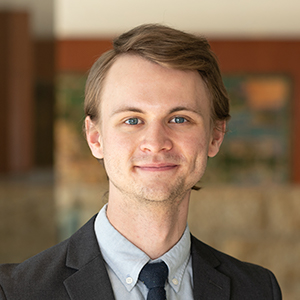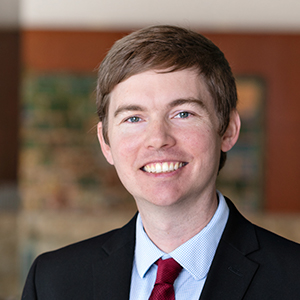The United States has for many years experienced substantial shortages of health care professionals that result in reduced patient access and higher health care costs. In this context, the health care system and the broader economy cannot afford to exclude qualified individuals from practice. Unfortunately, for many immigrant physicians (i.e., those who worked as physicians before immigrating) in the United States, this is exactly what has occurred. According to our analysis of data on approximately 300 physicians who immigrated to the United States between 2004 and 2022, only one in three who are employed report working as a medical resident or physician.
Occupational licensing is a key part of this story. Despite years of experience in their professions, immigrant physicians often struggle to meet the requirements of U.S. licensure, including the need to obtain residency training in the United States. Indeed, in prior research we found that licensing disproportionately reduces employment of foreign-born workers in the licensed sector. However, because that research focuses exclusively on occupations that are licensed in some states and not others, it does not speak to the experience of physicians and others who are licensed in every state. Unfortunately, standard datasets typically don’t include information—like occupation—about labor market experiences prior to immigration.
Through a data-sharing partnership with Upwardly Global, a national nonprofit organization focused on eliminating barriers for refugee and immigrant professionals and advancing their inclusion in the workforce, we were able to dig deeper into immigrant physicians’ experiences. Upwardly Global provided some of its deidentified programmatic data, which include information about its clients’ occupations in their countries of origin. While these data are not necessarily representative of the broader population, they provide a rare opportunity to understand how immigrants often take career detours after immigrating to the United States. We focus on the 296 individuals in the data who were physicians before they immigrated, and we illuminate the paths they have taken and discuss some of the strategies that have been used to help them practice medicine or pursue skill-aligned work.1
While many immigrant physicians work in health care, few are on track to practice medicine in the United States
Physicians who immigrate to the United States tend to find employment of some kind. About 85 percent of the Upwardly Global physician clients in the dataset report being employed. However, only 34 percent of those who are employed report working as a medical resident or a physician.2
Many of those who were originally physicians find non-physician health care jobs, as shown in Figure 1. One common occupation is medical assistant, where individuals complete various administrative and clinical tasks in a health care setting. Upwardly Global staff note that while this occupation does not fully utilize their medical training, many clients feel that medical assistant roles offer important networking opportunities with medical professionals and exposure to the American health care system. But the median annual salary among Upwardly Global clients who are former physicians working as medical assistants is $41,600 in 2023 dollars. While this figure only pertains to the first year of employment and is likely low relative to subsequent earnings, it is just a fraction of typical starting salaries for physicians in the United States.
Another common occupation is medical researcher, either in a health care or university setting. In this role, former physicians are able to use their medical expertise while avoiding the hurdles associated with relicensure. The median annual salary of Upwardly Global clients who are former physicians working as medical researchers is $59,000 in 2023 dollars—still far below that of practicing doctors, but again with the caveat noted above.
Where immigrant physicians emigrate from matters
Our sample is not representative of the entire population of immigrant physicians. But as Figure 2 shows, we observe interesting differences in the likelihood of a career detour for groups from different countries of origin. “On the physician trajectory” includes clients who were physicians prior to immigrating and are either medical residents or physicians in the United States.
Immigrant physicians in Upwardly Global’s client list are most likely to come from Myanmar; this group also has the largest share—71 percent—of its physicians on track for relicensure and physician practice. Many physicians also emigrated from Iraq. Of this group, 48 percent work in the United States as physicians or are on track to do so. By contrast, physicians from Afghanistan, Mexico, and several other countries shown in Figure 2 are less likely to be on track for medical practice as a physician in the United States.
These gaps may be due to unobserved differences among immigrants from different countries, but Upwardly Global notes that they are also related to country-specific information sharing: established immigrants telling new arrivals from the same country how to navigate the process, prepare for exams, and search for residency opportunities. As time goes on and a community grows, the benefits of that network grow as well. Meanwhile, newer communities may not experience these network benefits to the same degree.
Lack of educational credentials is not the problem for most
In assessing why so many former physicians are not currently on track to practice medicine, one important consideration is the educational credentials immigrants possess. In the United States, a doctor of medicine (M.D.) or a doctor of osteopathic medicine (D.O.) are the most common degrees held by those practicing as licensed physicians. As shown in Figure 3, of the former physicians in our sample who are not on track for relicensure, 77 percent hold M.D.s: lack of an M.D. does not appear to be the barrier for most former physicians.3 Indeed, in our data sample 69 percent of M.D. holders are not currently practicing or on track to becoming physicians.
The difficulty of physician relicensure deters many immigrants
Physician licensure is complicated. In addition to medical degrees, it typically requires exams, field-specific medical residencies, financial resources, and continuing medical education. (See Scheffler [2019] for a helpful discussion of these requirements as they apply to foreign-trained physicians.) Moreover, licensure requirements—for physicians or for most professionals in other fields—are not uniform across countries. When combined with the language barriers some experience, this makes for a daunting situation for immigrants who were formerly physicians.
Even if the United States had a minimally burdensome medical-licensure system, some of those immigrants might decide not to practice medicine here, whether because of changing preferences, new opportunities, or some other factor. It is not possible, based on the evidence presented in this article, to assess how many former physicians are deterred from U.S. practice by features of the licensure system. But some of our findings are illuminating in this respect. For example, we report in Figure 1 that 23 percent of immigrant physicians who are not on track to practice medicine in the United States are currently working as medical assistants. While these individuals may eventually still become relicensed, it seems likely that more would have done so had it been straightforward for them to translate their prior training into U.S. licensure.
While these data are not necessarily representative of the broader population, they provide a rare opportunity to understand how immigrants often take career detours after immigrating to the United States. Representatives from Upwardly Global told us that many of its clients are deterred by the unavailability of medical residency slots and the required time, cost, and complexity of the licensure process. Smoothing this process and making residencies easier to obtain would almost certainly increase the number of immigrants who contribute their talents as practicing physicians.
How state governments are addressing the challenge
It is important that states maintain quality standards for physicians, and differences in medical education need to be considered when translating international credentials. At the same time, some state governments have removed unnecessary barriers for internationally trained health care workers. Offices of New Americans in many states provide resources like licensing guides to help immigrants navigate complicated licensure pathways. In Minnesota, the International Medical Graduate Program sets aside residency slots for internationally trained individuals.
Importantly, policymakers can reconsider the rules that govern medical licensure. Illinois has just created a new pathway to full licensure for international medical graduates that replaces the U.S. residency requirement with two years of limited practice under the supervision of a licensed doctor. While limited in Illinois to situations where health care needs are demonstrably unmet, this reform illustrates an important option. Other states, like Washington, Tennessee, and Alabama, have similarly relaxed U.S. residency requirements.
Policymakers seeking to improve the availability of health care would be well served by understanding the impediments immigrant physicians face. Career detours signify the need for action to help immigrant physicians fully contribute their skills and experience.
The authors thank Rebecca Fishman and Tamar Frolichstein-Appel for sharing their insights and anonymized Upwardly Global data, and Gabriel Scheffler for his valuable comments on an earlier draft.
Endnotes
1 The former physicians included in the Upwardly Global data immigrated to the United States between 2004 and 2022.
2 Upwardly Global tracks what jobs clients initially take after working with the organization, but it does not formally track long-term outcomes. It’s possible that individuals become relicensed later on and are not tracked here.
3 An important caveat to this statement: Because clients in our dataset may use different names to refer to the same degree, there is an unknown degree of measurement error.







